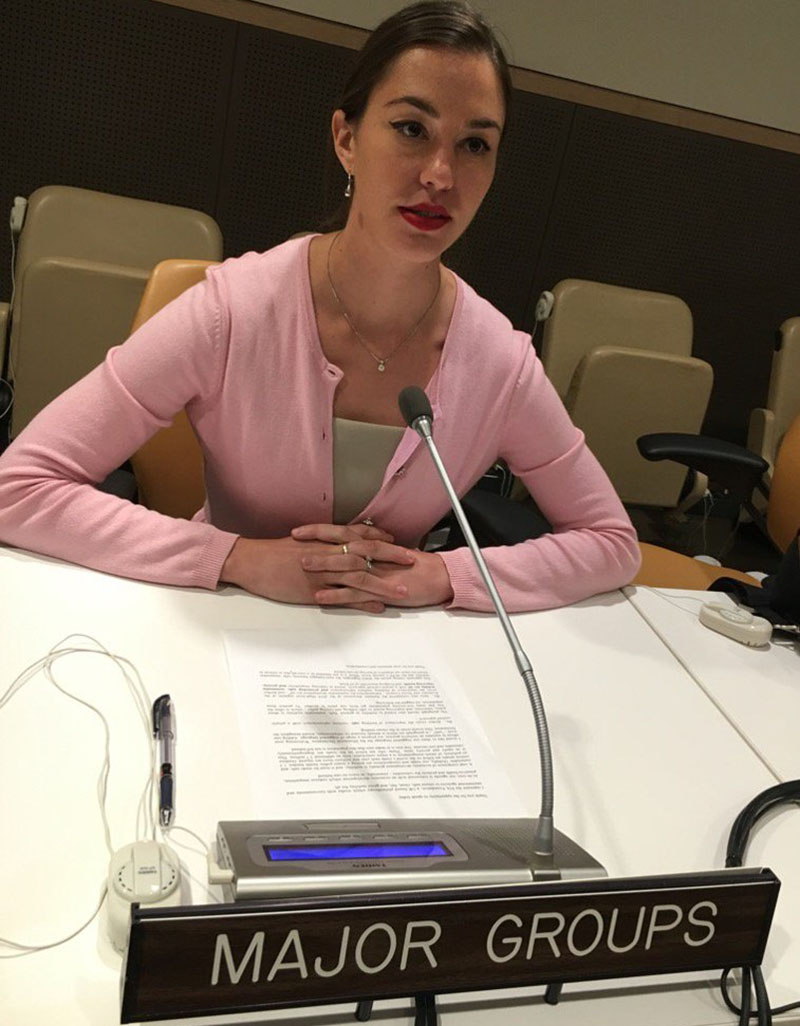Habitat III: a safe and healthy school journey for every child ‘is priority’





The Habitat III New Urban Agenda includes a commitment to a safe and healthy journey to school for every child as a priority for sustainable urban mobility following a final round of inter-governmental negotiations.
The inclusion of key points on safe mobility for all, and an emphasis on protecting children and the vulnerable, follows concerted advocacy by the Global Initiative for Child Health and Mobility, including the FIA Foundation and its partners.
Governments met at UN headquarters in New York from 7-10 September to finalise the text of the Habitat III outcome document, which will guide the global policy agenda on urbanisation for the next 20 years and will be an important contribution to the Sustainable Development Goals.
At Prepcom III in Surabaya, the final global conference to draft the declaration, the FIA Foundation worked with key Governments such as Brazil and partners including UNICEF to ensure that the policy priority of a safe and healthy journey to school for every child is included in the New Urban Agenda. The FIA Foundation has convened the Global Initiative for Child Health and Mobility as a partnership with this priority as a core focus. At Surabaya, the Child Health Initiative also launched a report on child poverty and road traffic injury to support the advocacy effort.
Saul Billingsley, FIA Foundation Executive Director said: “Ahead of formal adoption of the New Urban Agenda in Quito next month, Governments have demonstrated a strong commitment to sustainable mobility with particular attention on vulnerable road users – pedestrians, cyclists, motorcyclists and children. In particular, prioritising a safe and healthy journey to school for every child is a welcome and vital inclusion in the text. This is an agenda which is vital for the future of our cities, for equitable and sustainable development and importantly for the rights of every child.”
The FIA Foundation’s ‘safe, clean, fair and green’ agenda for Habitat III covers three main policy areas:
- Safe streets for all: vulnerable road users need improved protection on the roads in our cities. Poor families are particularly vulnerable and are locked into a cycle of poverty when hit by road traffic injury. City streets must be made safe for all with ‘safe system’ street design to create low speed, liveable environments encouraging walking and cycling. A ‘children first’ approach is needed. A safe journey to and from school for every child, in line with the Convention on the Rights of the Child must be a policy priority.
- Clean air for all: According to the WHO, 88% of urban dwellers live in cities which do not comply with the Air Quality Guidelines. Children are particularly vulnerable to acute respiratory infections from poor air quality as their lungs are still developing. Road transport makes a significant contribution to this problem, and must provide some of the solutions. Improving propulsion technologies and fuel quality; making vehicles more fuel efficient; and reducing urban car use by tackling the causes of car dependence, are vital.
- Vehicle numbers in cities are set to more than double by 2050 with implications for congestion, pollution and climate change. Equitable access to mobility is essential for economic growth and development, but is often constrained by a lack of options, affordability, and concerns about personal security. While in many developing cities pedestrians are in a majority, their needs are neglected. Fair access to low carbon transport options must be a priority.
The text of the New Urban Agenda which will be adopted at the Habitat III conference in Quito includes a strong focus on sustainable mobility, promoting the “safe system” approach called for in the UN Decade of Action for Road Safety. There is an emphasis on the needs of children as well as other vulnerable groups, people with disabilities, women, girls and the elderly. Emphasis is placed on pedestrian safety, the need for cycling mobility and motorcycle safety. The text on sustainable mobility ends by presenting a commitment to “promote the safe and healthy journey to school for every child as a priority.”
Read the final draft of the New Urban Agenda, adopted in New York on 10th September 2016, here
Read the FIA Foundation’s Safe, Clean, Fair and Green agenda for Habitat III here
Read the UNICEF-FIA Foundation input for Habitat III issued in Surabaya




